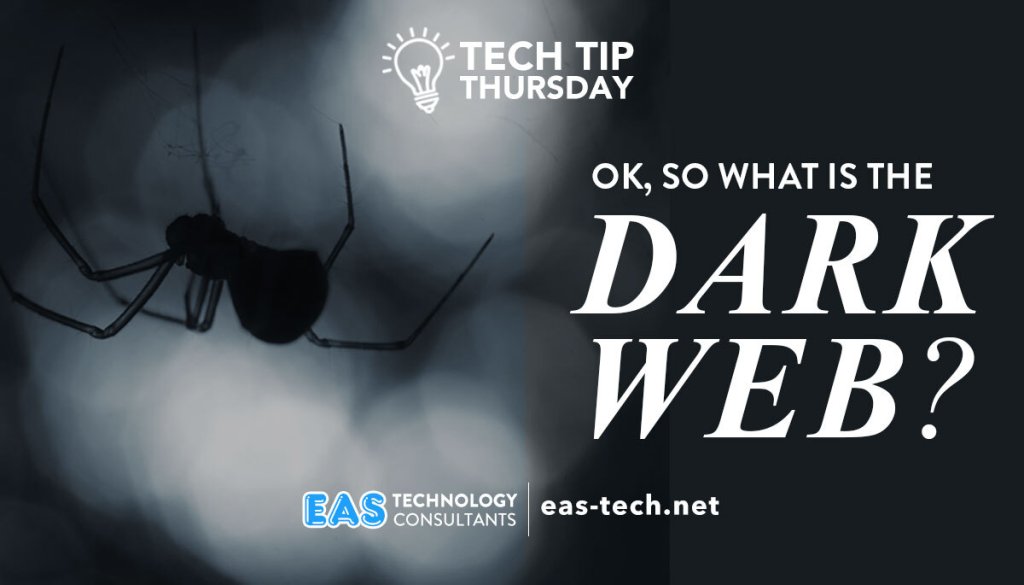The Dark Web is a mysterious place, and there’s a lot of misinformation out there about what it is and what you can find there. In this blog post, we’ll set the record straight and give you a crash course in all things Dark Web. Whether you’re curious about what it is or looking to keep your organization safe from its dangers, this post is for you. So let’s jump in!
The basics: what is the Dark Web and how does it differ from the regular ol’ Internet we use every day
The Dark Web is an increasingly popular internet-based network that remains hidden from search engines, often with the purpose of preserving anonymity and privacy. It is a subset of the Deep Web, which refers to anything on the internet that cannot be found using standard web search engines; while a part of this Deep Web exists completely outside the law, some is not present solely for illicit activities. The Dark Web differs from our regular ol’ Internet in many ways: it can only be accessed using special browsers such as Tor, data shared within it often isn’t indexed by major search engines, it has its own unique content and design, and many websites use cryptography to prevent third parties from tracking user activity. Despite its highly publicised connection to criminal activity and illegal trading networks, the Dark Web performs vital functions for those seeking privacy online and for countries with restrictive censorship laws.
Why people use the Dark Web – anonymity, freedom of speech, etc.
The Dark Web can be a mysterious and intimidating place, but many people are drawn to it because of the promise of anonymity and freedom of expression. Internet privacy has become harder to protect in recent years, so the Dark Web offers an attractive safe haven for anyone who wants to speak without fear of repercussions or have access to information that would be censored by mainstream search engines. Some users also use the encrypted platforms for illicit activities such as buying and selling drugs, firearms or stolen data; however, many people turn to the Dark Web for legitimate reasons, such as researchers studying sensitive topics and activists looking for ways to fight oppressive governments. Ultimately, whatever reason brings people to the Dark Web – anonymity, freedom from censorship or illicit activity – shows how important having secure spaces is in today’s internet landscape.
The dangers of the Dark Web – malware, scams, etc.
The Dark Web can be a dangerous place for unsuspecting and uninformed web surfers. It is filled with malware and scams that take advantage of its lack of regulation, making it incredibly vulnerable to exploitation from hackers, criminals and even terrorists. Additionally, many products that are sold on the Dark Web range from weapons to drugs to stolen identities, which can then be used for criminal activity elsewhere on the web. As such, it is important to remain aware of potential dangers when visiting sites in the Dark Web and be careful about what you click on or download. Taking these precautions can help protect yourself and your information from malware and scams while browsing online.
How to access the Dark Web safely (if you’re interested in doing so)
Accessing the Dark Web accurately and safely requires a certain set of skills and knowledge. To ensure your safety, make sure that you are using the Tor browser, which is a special browser created for accessing the dark web and hiding your browsing activities from others. You can also use a few other tools to protect yourself, such as virtual private networks (VPNs) or the TOR proxy tool TAILS. Additionally, make sure not to access websites containing illegal activities or content. It is important to know exactly what you are doing while on the Dark Web in order to protect yourself; as this area can be rife with malicious actors out to take advantage of unsuspecting users. A little research before diving into this realm can save much grief later on down the road.
Some final thoughts on this strange corner of the internet
The internet can be a strange place. There are many unknown corners that often surprise us with their surprises. This corner is no exception to this rule as it contains a plethora of fascinating things and ideas that leave us scratching our heads in wonder. With the growth of technology, these “strange corners” seem to be increasing exponentially, opening up interesting opportunities for exploration at a faster rate than ever before. While it is reassuring to know that there will always be something new around the corner on the internet, let’s make sure that we use our time in productive and respectful ways when discovering them.
In the end, it should be noted that the Dark Web is still something of a mystery to most of us and some level of caution should always be exercised when exploring this part of the internet. While it can certainly bring about a sense of freedom for those who value such things, it can also pose a variety of risks. But if you take necessary precautions and have an appropriate mindset, then accessing the Dark Web can be a rewarding experience that helps you gain more knowledge about this unique corner of cyberspace. It’s important to remember that ultimately, no matter what your goals are in regard to the Dark Web, safety should always come first. With that in mind, we believe that each individual should make their own decision as to whether or not they choose to explore it and proceed accordingly. So if you do decide to go down the proverbial rabbit hole that is the Dark Web, good luck – hopefully what you learn will benefit you in both personal and professional life!

